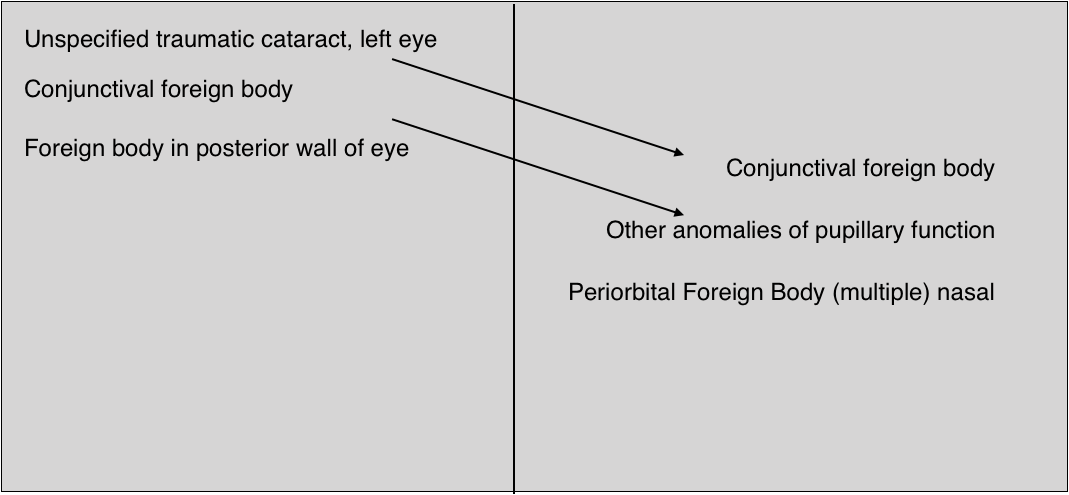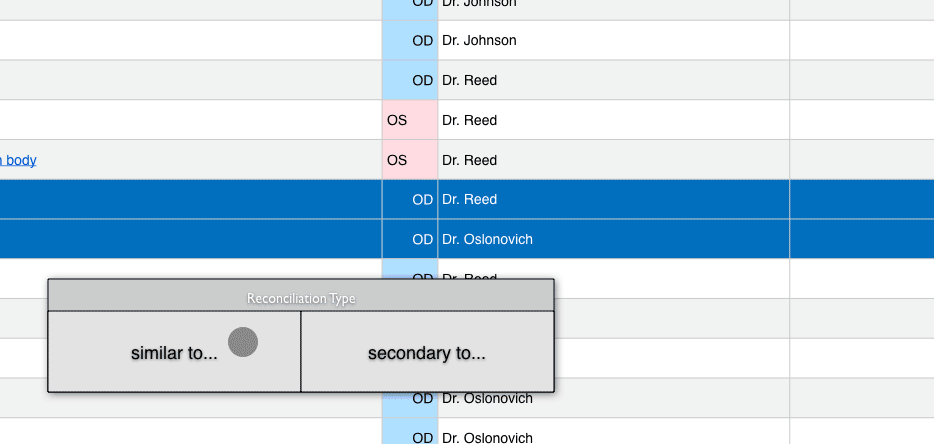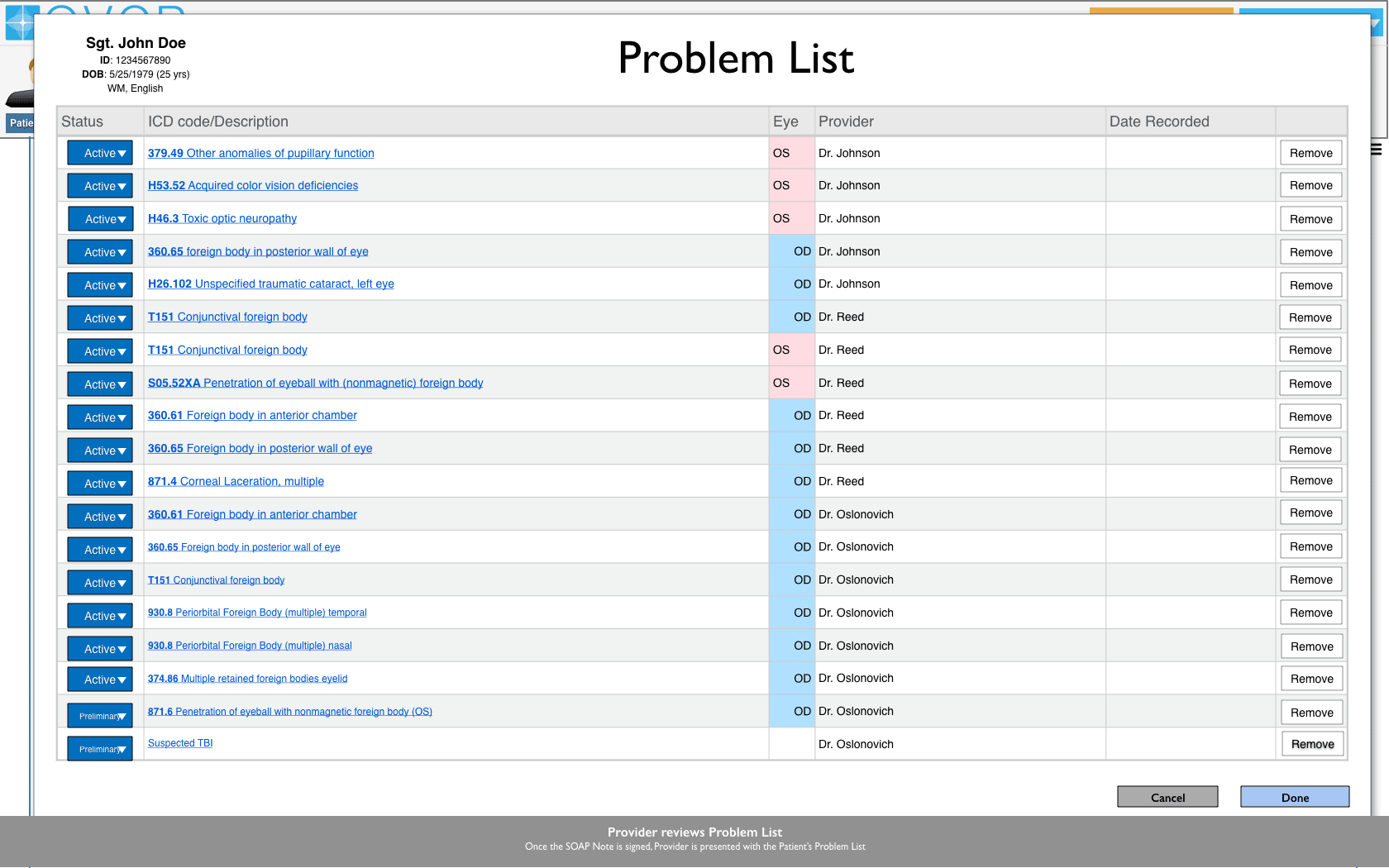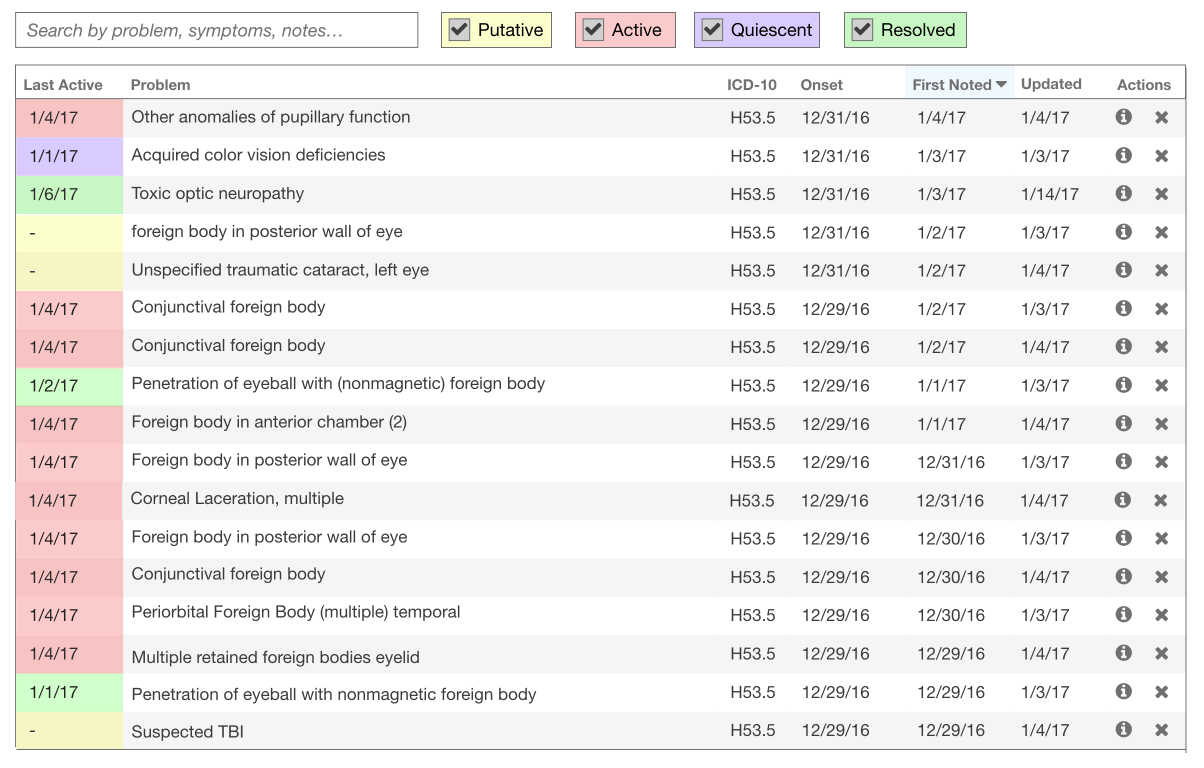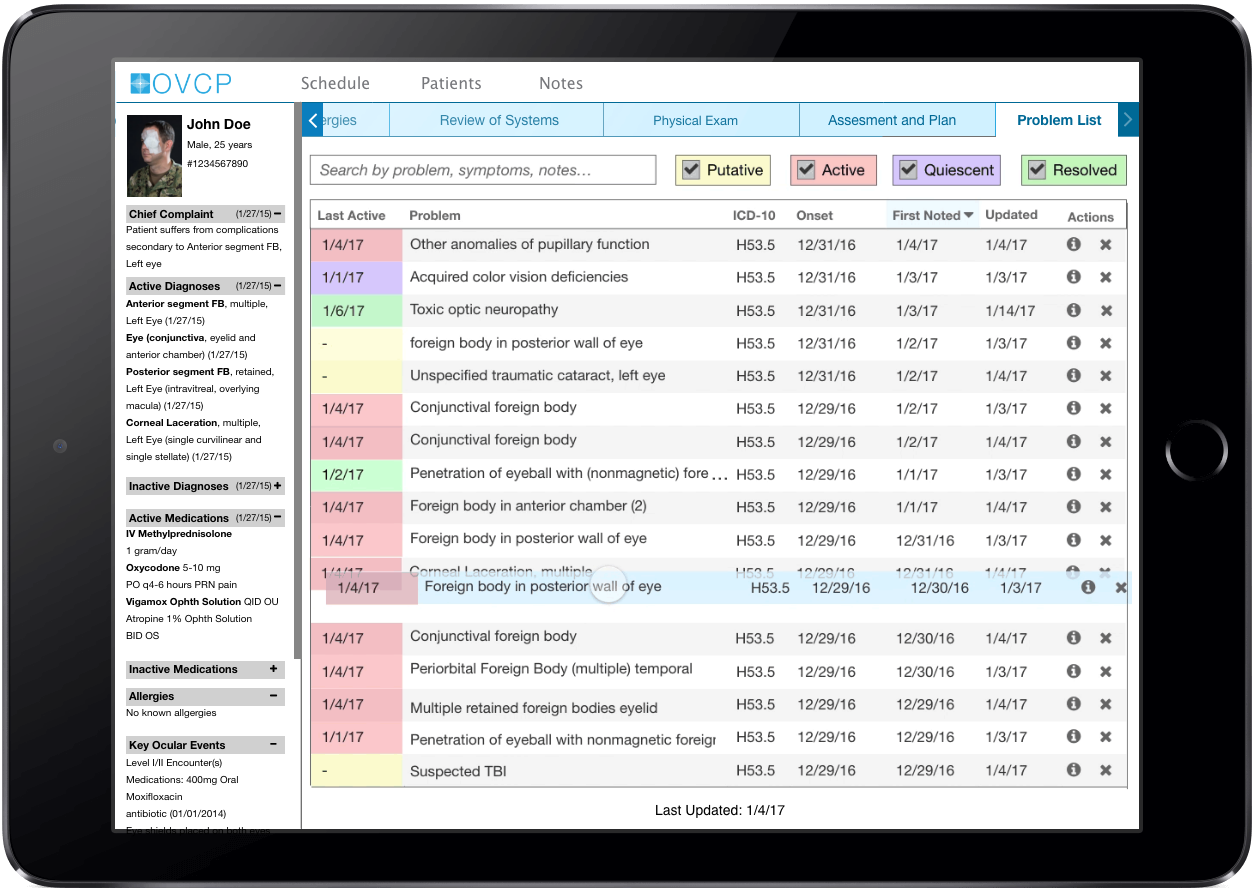
Optimal Vision Care Prototype
The OVCP was a contract funded by the Department of Defense to research novel solutions to problems physiicians were having with modern EHRs. The purpose of the contract was to research these issues, document our designs, and collect quantitative and qualitative feedback from care providers to establish requirements for the next generation of medical software in the military.
This page is case study of the two-week spring focused on the problem list - which was only disocverd to be a significant problem only after it came up several times while documenting diagnoses in preceeding sprits
My Role
UI Engineer
Client
Department of Defense
Timeline
2 weeks
Tools Used
Adobe XD, Apple Keynote, ProtoPie
